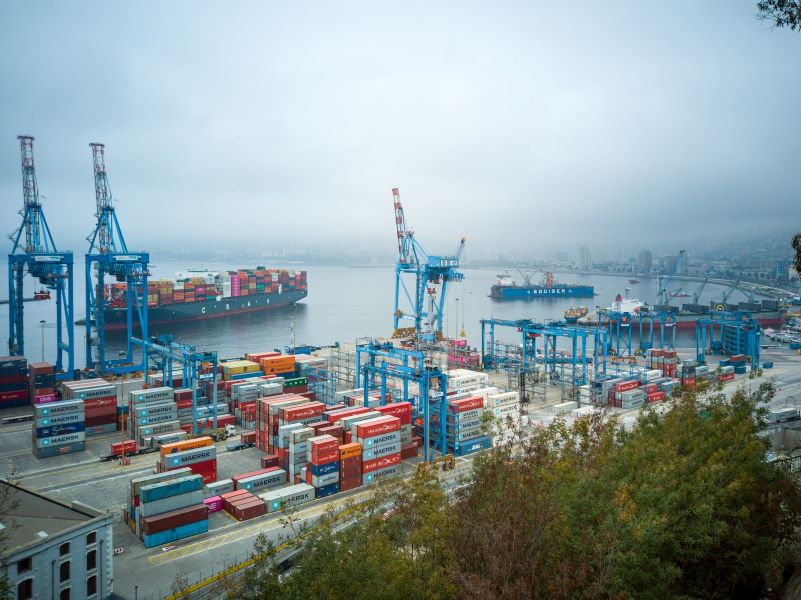Adapting to Materials Shortages in the Green Industry
By Evelyn Long

Every industry is feeling the impact of the global supply chain slowdown, including greenery and landscaping. At the same time, demand isn’t slowing down for the green industry, especially amid a booming housing market.
As landscaping companies adapt to today’s challenges, many wonder when the supply chain will return to normal. While no one can say for certain, understanding the situation may provide some insight. Here’s the lowdown on how materials shortages affect the green industry.
The impact of the housing market
The housing market is directly related to the materials shortage in the green industry. During the last couple of years, demand for new homes has surged to record highs. Many existing homeowners also took the opportunity to renovate and add on to their homes during the COVID-19 pandemic.
This demand, coupled with delayed shipping and a widespread materials shortage, has resulted in a competitive, expensive housing market — which includes the need for landscaping.
A staggering 90% of homebuilders reported struggling with delays and shortages. In fact, the situation has gotten so bad that many professional builders are going to stores like Home Depot to get materials when suppliers are out of stock. Between insufficient materials and labor shortages, many construction professionals are falling months behind. These delays make the housing market even more turbulent.
Industry experts have found no singular cause for the materials shortage. Several factors are at play, including natural disasters like the California wildfires, plant and mill shutdowns, and delays at ports, in addition to the COVID-19 pandemic. These obstacles are delaying normal production of materials such as lumber, concrete and metals. The green industry is working with different materials, but the same rules apply.
Challenges in the landscaping industry
Landscaping companies have a challenge that is unique compared to other industries. It takes a certain amount of time for plants to grow, so keeping up with demand is not as simple as working longer hours or increasing productivity. Additionally, it is more difficult for these businesses to pivot production when trends shift. Even when plants are available and ready for customers, getting them in landscapers’ hands is taking longer than usual.
When it comes to non-organic materials, such as plastic and ceramic planting pots, landscaping companies have to compete with other industries, which raises prices. Materials such as mulch and fertilizers are also in high demand and turbulent supply.
Landscaping professionals have been finding creative solutions to these challenges, though. For example, many customers know of a specific plant or item they are interested in. They may not be aware that there are similar alternatives, though. Landscaping companies are helping people find these alternatives when first-choice options are unavailable. This improves client satisfaction while also managing stock levels.
Many landscaping companies are also keeping their inventories overstocked in preparation for shortages and delays. This helps fortify businesses against ongoing supply chain issues and provides a buffer for customers. When an item becomes particularly popular despite short supply, landscaping companies can implement purchase limits to prevent a sellout.
Preparing for supply chain recovery
It is difficult to determine when the supply chain will normalize again. Some predict things could bounce back by the end of 2022. However, some experts say it may be another two years before things stabilize, in 2024 or 2025. Landscaping companies will need to prepare for the long haul.
It will likely take a year or two for the supply chain to recover, but the situation could start to improve a little bit at a time as suppliers, manufacturers and retailers adapt. For example, if more landscaping companies begin informing customers about alternatives to popular plants, supply can start to catch up.
Adopting next-gen communication technologies may help landscaping companies, as well. Maintaining streamlined communication between suppliers, nurseries, retailers, architects, contractors and customers can help businesses manage supply and demand.
A good communication chain can also prevent delays and shortages through quick response times. For example, if bad weather threatens an important nursery, the local landscaping community may be able to preserve the plants and protect the supply chain.
Growing back better than ever
The current climate of the green industry supply chain is challenging, but it may lead to a more resilient industry. As landscaping companies, nurseries, builders and other members of the supply chain adapt, they will become more prepared for future supply disruptions.
This newfound flexibility and creativity will strengthen the sector in the long run. When the supply chain eventually bounces back, it will emerge optimized for efficiency and perseverance.
Evelyn Long is a writer and editor focused on home building and construction. She is the co-founder of Renovated, a web magazine for the home industry.


